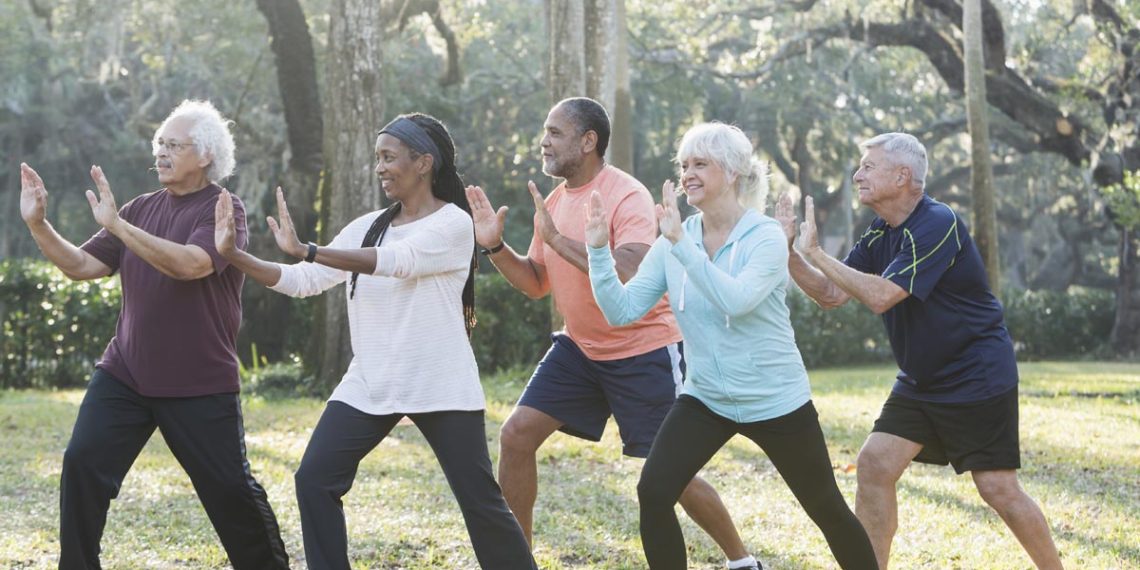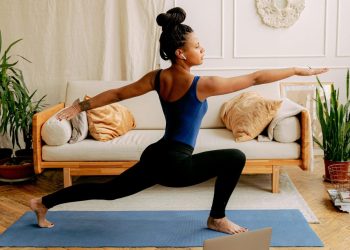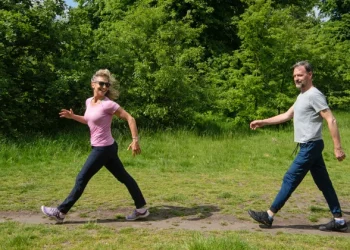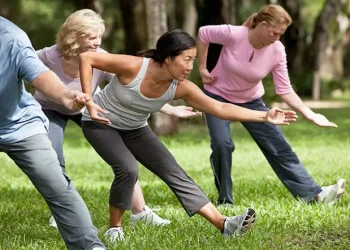Tai Chi walking, also known as “walking meditation” or “Tai Chi strolling,” combines the mindful principles of Tai Chi with the simple act of walking. This gentle yet powerful practice enhances balance, coordination, mental clarity, and overall well-being. Unlike regular walking, Tai Chi walking emphasizes slow, deliberate movements with heightened body awareness, proper weight transfer, and synchronized breathing.
This ancient practice offers benefits for people of all ages and fitness levels, from improving proprioception in older adults to reducing stress in busy professionals. The beauty of Tai Chi walking lies in its accessibility you need no special equipment, just a willingness to slow down and move with intention.
Fundamental Principles
Before diving into specific routines, understanding the core principles ensures you practice safely and effectively:
Weight Transfer: The hallmark of Tai Chi walking is the complete transfer of weight from one leg to another. The supporting leg should bear 100% of your weight before the other leg moves, creating stability and improving balance.
Rooting: Each step begins by “rooting” into the ground through your supporting foot, creating a stable foundation. Imagine your foot having roots extending deep into the earth.
Alignment: Maintain upright posture with your head suspended as if held by a string from above. Keep shoulders relaxed, spine straight but not rigid, and knees slightly bent.
Breath Coordination: Synchronize breathing with movement. Generally, inhale as you lift and advance the foot, exhale as you transfer weight and settle into the step.
Mindfulness: Keep attention focused on the sensations in your body the shift of weight, the contact with the ground, the movement of your limbs.
Basic Tai Chi Walking Technique
- Starting Position: Stand with feet hip-width apart, knees slightly bent, arms relaxed at your sides or held in front of your lower abdomen (as if holding a ball).
- Weight Shift: Slowly shift all your weight onto your left leg, feeling it root firmly into the ground.
- Foot Lift: Lift your right foot slowly, keeping the knee bent and foot relaxed.
- Step Forward: Move the right foot forward, touching the heel to the ground first.
- Weight Transfer: Gradually transfer your weight forward onto the right foot, rolling through heel, mid-foot, then toes.
- Complete the Step: Once 100% of your weight is on the right foot, the left foot becomes “empty” and ready to move.
- Repeat: Continue this process, alternating legs with each step.
Sample Routines by Skill Level
Beginner Routine (Weeks 1-4)
Duration: 10-15 minutes daily
Focus: Mastering basic technique and building body awareness
- Warm-up (3 minutes): Gentle joint rotations ankles, knees, hips, shoulders, neck
- Basic Walking (8 minutes): Practice fundamental Tai Chi walking on a straight path (10-15 feet). Focus on one principle per session:
- Day 1-2: Weight transfer only
- Day 3-4: Rooting sensation
- Day 5-6: Breath coordination
- Day 7: Integrate all principles
- Cool-down (2 minutes): Stand in Wu Chi stance (relaxed standing posture), allowing breath to normalize
Key Tips: Take extremely small steps initially. Count to five for each complete step. It’s normal to feel wobbly use a wall for support if needed.
Intermediate Routine (Months 2-6)
Duration: 20-30 minutes, 4-5 times weekly
Focus: Refinement, endurance, and incorporating arm movements
- Warm-up (5 minutes): Tai Chi Qigong exercises (cloud hands, embracing the tree)
- Walking Practice (20 minutes):
- Segment 1 (7 minutes): Basic walking with arm movements. As you step forward, raise arms to chest level; as you settle into the step, lower arms.
- Segment 2 (7 minutes): Backward Tai Chi walking transferring weight backward requires greater balance and control
- Segment 3 (6 minutes): Circular walking practice following a large circle, maintaining consistent pace and posture
- Cool-down (5 minutes): Standing meditation and gentle stretching
Progression: Increase the distance covered while maintaining slow, controlled movement. Begin practicing outdoors on varied but safe terrain.
Advanced Routine (6+ Months)
Duration: 30-45 minutes, 5-6 times weekly
Focus: Integration with full Tai Chi forms, complex patterns, and deeper meditative states
- Warm-up (7 minutes): Full body Qigong sequence
- Walking Practice (30 minutes):
- Segment 1 (10 minutes): Variable-pace walking alternate between very slow (30 seconds per step) and moderately slow (10 seconds per step)
- Segment 2 (10 minutes): Pattern walking incorporate figure-eight patterns, zigzags, and spiral paths
- Segment 3 (10 minutes): Integrated form walking weave specific Tai Chi movements (Ward Off, Rollback, Press, Push) into walking sequence
- Cool-down (8 minutes): Extended standing meditation focusing on internal energy flow
Challenge Elements: Practice on gentle slopes, integrate pauses with single-leg standing, add conscious visualization of energy pathways.
Time-Based Routines
Quick Morning Practice (10 Minutes)
Perfect for busy schedules or as a gentle wake-up routine:
- Minutes 1-2: Wake up the body with ankle circles and knee lifts
- Minutes 3-8: Focused Tai Chi walking 20-30 steps forward, turn slowly, 20-30 steps back
- Minutes 9-10: Closing stance with deep breathing
Lunch Break Reset (15 Minutes)
Ideal for office workers needing midday stress relief:
- Minutes 1-3: Shake out tension and perform shoulder rolls
- Minutes 4-12: Tai Chi walking with special attention to breath coordination four counts inhale, four counts exhale per step
- Minutes 13-15: Standing Qigong posture (holding the ball) to center energy before returning to work
Evening Wind-Down (30 Minutes)
For deeper relaxation and better sleep:
- Minutes 1-5: Gentle warm-up with focus on releasing accumulated tension
- Minutes 6-25: Extended Tai Chi walking practice include forward, backward, and circular patterns at a very slow pace
- Minutes 26-30: Seated or standing meditation, allowing the mind to settle completely
Goal-Specific Routines
For Balance Improvement
Key Elements: Narrow stance work, extended single-leg support, eyes-closed practice (only when safe)
15-Minute Routine:
- Warm-up: Leg swings and weight shifts (3 minutes)
- Practice: Tai Chi walking with 10-second holds on each leg before stepping (10 minutes)
- Challenge: Final 2 minutes with eyes half-closed, focusing on proprioceptive feedback
For Stress and Anxiety Relief
Key Elements: Emphasis on breath work, slower pace, outdoor setting when possible
20-Minute Routine:
- Begin with box breathing: 4 counts in, 4 hold, 4 out, 4 hold (3 minutes)
- Tai Chi walking with focus on exhaling tension with each step (14 minutes)
- End with gratitude practice—acknowledge three things you’re grateful for (3 minutes)
For Lower Body Strength
Key Elements: Deeper knee bends, longer holds, slight squat in stance
25-Minute Routine:
- Warm-up: Squats and lunges (5 minutes)
- Modified Tai Chi walking with lowered center of gravity (15 minutes)
- Incorporate snake creeps down movement between steps (5 minutes)
For Mindfulness and Meditation
Key Elements: Ultra-slow pace, minimal distance covered, maximal internal awareness
30-Minute Routine:
- Settle into standing meditation (5 minutes)
- Ultra-slow walking—taking 45-60 seconds per step, counting the breath, noting sensations (20 minutes)
- Return to standing, observe the aftereffects (5 minutes)
Practical Tips for Success
Environment: Begin indoors on a clear path. Progress to outdoor locations parks, gardens, or quiet trails once you’re comfortable with the technique.
Footwear: Flat, flexible shoes with thin soles provide the best ground contact. Many practitioners prefer barefoot practice when safe and comfortable.
Frequency: Consistency matters more than duration. Ten minutes daily surpasses 30 minutes twice weekly for building skill and reaping benefits.
Self-Compassion: Some days balance feels perfect; other days you’ll wobble. This variability is normal and part of the practice.
Integration: Combine Tai Chi walking with traditional Tai Chi forms for comprehensive benefits.
Safety Considerations
Always practice in a safe environment free from obstacles. If you have balance issues, practice near a wall or sturdy railing. Those with chronic conditions should consult healthcare providers before beginning. Stop immediately if you experience pain, dizziness, or unusual discomfort.
Conclusion
Tai Chi walking offers a gentle entry point into mindful movement or an excellent complement to existing Tai Chi practice. Whether you have 10 minutes or an hour, whether you’re seeking stress relief or physical conditioning, there’s a routine that fits your needs. The key is to begin where you are, practice consistently, and allow the benefits to unfold naturally over time. As the ancient saying reminds us: “A journey of a thousand miles begins with a single step” in Tai Chi walking, that step itself becomes the journey.






